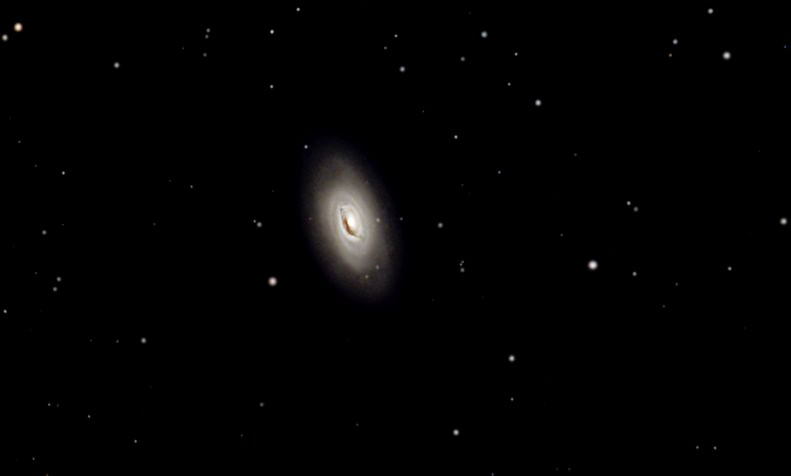
The Black-Eye Galaxy is unusual in that the galaxy has a dark dust cloud in the region of the central nucleus, bordering the entire north and east side of the oval central mass. This dust cloud is the feature from which the galaxy derives its name as the "Black-Eye" galaxy. This galaxy is the result of a collusion between a large galaxy and a small galaxy. The outer regions of the Blackeye Galaxy rotate one direction while the inner regions rotate the opposite way. The galaxy is about 20 to 25 million light-years away from us, and is receding at a rate of 225 miles per second. It is about 48,000 light-years in diameter. M64 is one of the more massive and more luminous galaxies discovered. It is an excellent object for amateur size telescopes. The galaxy was discovered by J.E. Bode on April 4, 1779, and was recorded by Charles Messier in March 1780.
This is a composite RGB CCD image taken with an SBIG ST-8E CCD at prime focus on a Takahashi FCT-150 refractor at f7. The image was taken from my backyard in Scottsdale, Arizona.
M64 (NGC 4826)
Constellation: Coma Berenices
RA: 12h 56m 55.7s Dec: +21d 39' 19"
December 13, 2004
Image by Sid Leach
Scottsdale, Arizona
Recent Images.
Complete list of images.
Description of equipment used to acquire images.
Home
Feedback and comments should go to Sid